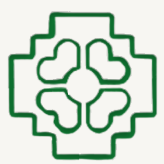
Restore balance in nature and Mother Earth
In recent years, the paqos or Inca shamans (holy men and women, healers, priests, and specialists in medicine) have seen their sacred mountain glaciers begin to melt. This was a sign from an ancient prophecy that they should come down from the mountains to share their wisdom with Western civilization.
Mother Earth (Pachamama) was in dire need for people to know what to do to bring back the balance in nature and society that has rapidly deteriorated in the past century. This they have willingly done and are now sharing around the world in special schools and workshops where they travel to teach about their rich heritage with open hearts and open arms. Despite the way their ancestors were treated, they do not hold a grudge nor do they hold onto any anger. The reaction of some other indigenous peoples has understandably been to keep their traditions away from those who wish to know about them. But the Q’ero people believe they should share their knowledge and energy because it is crucial for the preservation of life on this planet and our health.
Many Westerners have lost touch with nature, in general and lost all meaning in life, along with their peace of mind, wellness, and true purpose as souls. The Q’ero Inca shamans help to teach us how to live in balance and give back to Mother Nature in reciprocity (ayni) and with each other. The Q’ero do not see themselves as separate from each other as we do in the West. They realize deeply that we are one with nature, with spirit (God), and other people.
Nature has so much to teach us, if we only know how to listen, respect, and take time to love. The Q’eros see the divine in all nature and speak to each mountain, rock, plant, river, animal and human with attentiveness and care.
Details
The Inca prophecies, steeped in ancient Andean culture, speak of significant cosmic transformations and shifts in human consciousness. One central prophecy, known as Pachakuti, describes a series of phases leading to a new era. The term “Pachakuti” in Quechua, the language of the Incas, translates to “the return of time, change, or disturbance” and indicates a period of upheaval and cosmic transformation.
This prophecy unfolds in four phases:
- First Phase (Pachakuti): Beginning on August 1, 1990, this phase marked three years of cosmic changes, where upheaval was dominant, and a call to practice Ayni (reciprocity and harmony) was emphasized.
- Second Phase: Spanning seven years, this phase focused on growth, where the exchange of gifts (abilities) like love, work, and thought was crucial.
- Third Phase: Lasting twelve years, this phase was a period of maturation, setting the stage for a new age, including the creation of a new initiation ritual called Mosoq Karpay.
- Fourth Phase: This phase heralds a time of prosperity, revealing new levels of consciousness and individuals capable of instant healing and enlightenment.
As of August 1, 2012, according to Andean masters Don Manuel Qispe and Don Jesús Qana, the new age had begun, symbolizing a shift towards greater spiritual awareness and harmony.
Another notable prophecy is the Eagle and the Condor prophecy. This prophecy speaks of human societies diverging into two paths: the path of the Eagle (representing the mind, the industrial, and the masculine) and the path of the Condor (symbolizing the heart, intuition, and the feminine). According to this prophecy, starting from the 1490s, a 500-year period would see the dominance of the Eagle people, almost driving the Condor people to extinction. However, beginning in 1990, there was potential for these two paths to converge, heralding a new level of consciousness for humanity.
This prophecy, while varying across different Indigenous cultures, consistently emphasizes the need for balance and harmony between these two paths. It calls for an integration of the mind and heart, the industrial and intuitive, the masculine and feminine, to achieve a more conscious and balanced existence.
These prophecies, deeply rooted in Inca and broader Andean spiritual traditions, are not just historical or cultural artifacts but are seen as living guides, offering wisdom and insight for contemporary societal and ecological challenges

Flores Choke Naun Hesus comments about an ancient prophecy

